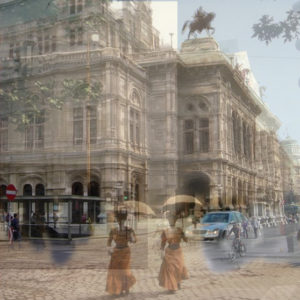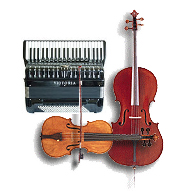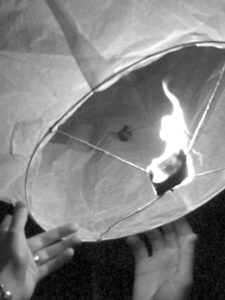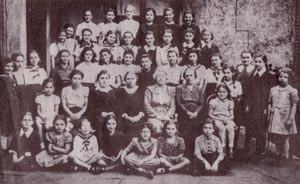Wrap up warm but, if the forecast is to be believed, the gale and rain will have blown through by midnight! See you there.
Author: Deidre Miller (Page 3 of 4)
Strathbungo Society Newsletter, December 2012
The newest newsletter is off to the printer! Thanks so much to everyone who took the time to review it at short notice. Hopefully it’s now reasonably free of errors and typos! Merry Christmas, everyone, and see you at The Bells!
Hi, everyone. This should be the final draft of the newsletter. It’s the second edition I’ve edited and the first I’ve done the layout for. This version is in a facing pages format that should be easy to read online and to print. Now, I’m off to format it for the printer, as a 3-on-3. Thanks to Nikki Cameron, Andrew Downie, Monika Hozdekova, Laura Moodie and Natalie Morgan-Klein for their contributions. Thanks to Liz Macdonald for helping me to get up and running on the layout. Finally, thanks to everyone who has taken the time to read the drafts and has spotted needed corrections.

The photos are numbered. Use this key to find the one you’re looking for. There’s also a copy of it in the Flickr set.
So… I volunteered to take baseline pictures of the laneways at the Strathbungo Society meeting before last, then forgot about it when it inconveniently rained for a couple of days straight right afterwards. I was reminded when I skimmed the minutes before last Monday’s meeting. It’s finally done. Yay! If you click on the key to the left, it will take you to the photo set on Flickr. Feel free to download the laneway photos or use them however you’d like. They’re licensed ‘Attribution Creative Commons’ and should be downloadable (If not, let me know and I’ll figure out how to fix it).
Tai’ Chi is a Chinese exercise regimen that improves strength, balance, posture and concentration. It has two components: a defined set of movements, or form, and push hands, which is done with a partner. Tai’ Chi was first developed as training for the martial arts, a type of shadow boxing. Today, it’s a an art and a discipline in and of itself.
Tai’ Chi is zero impact and is safe and beneficial for people of all all ages. I first used it as a way to regain strength and muscular balance after being badly injured in a car accident many years ago. It’s excellent for both healing and for physical fitness.
For anyone who has been wanting to try – or revisit – Tai’ Chi, here’s the perfect opportunity. There are affordably priced beginners Tai’ Chi classes starting right here in our neighbourhood in a couple of weeks:
- Starting Monday, 27th August
- 7.30pm – 9.30pm
- Queens Park Church Of Scotland (170 Queens Drive)
- £6 waged / £4 unwaged
The classes will be taught by Glen Williams of Five Winds. He can be contacted at williams.glen (at) yahoo.co.uk or at 07891760744.
For those who prefer a daytime class, there’s also this one:
- Starting Wednesday 29th August
- 10:00 am – 11:00 am
- Toryglen Community Hall (199 Prospecthill Circus)
- £3.50 per class
That class will also be taught by Glen. You can book a place on 0141 569 1031 or by e-mailing toryglen.community (at) gmail.com.
I recently had the opportunity to attend a conference on solid wall insulation in Edinburgh, sponsored by Changeworks and Historic Scotland, for the Strathbungo Society. I’m a building engineer (structural/building science) from North America, and I moved to the neighbourhood in 2010.
I’ve started a personal building blog called Sauce and have cross-posted this article. I’ll add more detailed notes and bits of research to Sauce over the next couple of weeks and either link to them or cross-post them to BungoBlog.

Most people who live in Strathbungo are probably aware that our exterior walls are yellow and red sandstone. These walls are load bearing (the roofs and floors are supported by them) and – unless they’ve been retrofitted – uninsulated except by lathe and plaster. They’re also quite thick. Some them may have more than one layer or method of construction – anyone who’s taken one apart could perhaps go into detail in the comments? Anyway…
Right now, improving the energy efficiency of buildings is a government priority. Less energy use means fewer greenhouse gas emissions. Of course, a more efficient house – one that holds onto heat rather than losing it – also saves us money on gas and electricity. So, there are all kinds of reasons to try to improve the thermal performance of our houses. However, like everything having to do with old buildings, there are significant expenses and even some risks involved. The risks with insulation are always related to moisture: mould, rot and deterioration of the building materials.
I’ll start with a summary of the main points I gathered from the conference, based on an e-mail I already sent to Strathbungo Society members.
- Although exterior wall insulation is technically the best solution for solid walls, it is obviously not appropriate for our buildings. Even the buildings in the neighborhood that aren’t listed historic properties are old and beautiful, and I doubt anyone would want to cover up the stone with exterior insulation, even if it were possible to get planning permission.
- There are very thin forms of interior wall insulation available, and they can be installed without ruining the interior detail in historic buildings. However, installing them on walls with moisture issues is not a good idea. I want to do a bit more research on this to clarify things, but basically, I’m thinking it’s a lot of expense, trouble and risk for minimal benefit.
- Conclusion: As a Strathbungoer, the best way to improve the thermal performance of your house is probably not by adding wall insulation.
Here’s the big news: A recent study explored actual vs. theoretical thermal resistance in stone walls. In reality, they tend to perform significantly better than the models currently in use by architects, engineers and the government suggest they should. We’re talking about a 50%+ difference in real vs. theoretical performance. In other words, our stone walls aren’t as bad as they say. I’m not surprised at all by this. Bryan’s and my flat is actually the second solid-walled property I’ve owned. Both have had lower than expected energy bills.
While it may not be worth it to try to insulate all along the exterior walls, I believe that it would be worth it to insulate anywhere the exterior wall is thinner than normal, notably at false windows/nooks. I’ve thought about doing this at our flat and have some plans drawn up for it. Basically, I’d strip out the shelves, put in board insulation, seal around it, and replace the shelves. There is a potential issue with moisture getting trapped between the stone wall and the insulation… Still thinking about that one.
I can’t emphasise enough that stopping drafts is absolutely vital to energy efficiency. Most heat escapes through air leakage, not diffusion through walls – this I know from studying building science in Canada.
BUT, if you do have a few quid on hand and want to improve the energy efficiency of your house, I saw one very impressive product: a window system that allows you to keep your original exterior windows, but adds a new, well sealed window between the exterior windows and the interior shutters. Now THAT would improve thermal performance. Does anyone already have these? What do you think of them?
I’ve embedded a video (from the conference) that shows how it works below.
In conclusion, I think it’s the picky detail work eliminating drafts and insulating thinner parts of the walls that’s going to make a big difference, not a big, expensive wall insulation project. Adding a double-glazed window between the original window and the shutter is also a promising idea.
More to come!
 Some… Starthbungoites? Strathbungoians? Strathbunyans? are probably aware of the Viennese Ensemble. (At least four people are, since there are two members from Strathbungo and I’m pretty sure our spouses have noticed us slipping out for rehearsals every week.)
Some… Starthbungoites? Strathbungoians? Strathbunyans? are probably aware of the Viennese Ensemble. (At least four people are, since there are two members from Strathbungo and I’m pretty sure our spouses have noticed us slipping out for rehearsals every week.)
The Viennese Ensemble plays pop music so old that my grandfather, who recently passed away in his mid-nineties, may have just barely remembered it from his childhood. Think of European cafe scenes from old films, gas-lit streets, waltzing in nightclubs, that sort of thing.
Though the music we play is as old and durable as Strathbungo houses, the Viennese Ensemble has now entered the digital age! We have:
- an archive of live tracks onBandcamp,
- a WordPress blog for keeping track of upcoming gigs,
- and a Facebook page that you can ‘like,’ and where I’ll post links to new gig and tracks
We hope that you enjoy listening to this music as much as we enjoy playing it- and it is FUN to play.
We’ll be playing at the craft fair at Church on the Hill – kitty corner across Queen’s Park – this Saturday, March 31st, from 2:00 to 4:00.
(Please note that the fair has been moved from Sunday to Saturday.)
Come listen to us for free and buy our new CD!
 South Glasgow Heritage and Environment Trust and Tram Direct are presenting “To Serve is to Resist,” a new play by Ian Morland, on the last weekend of March at Queen’s Park Church. The artistic director is Isobel Marrett.
South Glasgow Heritage and Environment Trust and Tram Direct are presenting “To Serve is to Resist,” a new play by Ian Morland, on the last weekend of March at Queen’s Park Church. The artistic director is Isobel Marrett.
The play is based on the life of Jane Haining, a Scottish Missionary and Queen’s Park Church parishioner who was murdered in Auschwitz in 1944. Jane was born in in Dunscone near Dumfries in 1897 and later moved to Glasgow, where she was employed for ten years at a threadmaker’s in Paisley. She volunteered as a missionary and was sent to a Church of Scotland mission in Budapest in 1932.
In Budapest, Jane served as a school mistress and was in charge of 400 orphans and poor children, mostly Jewish, who attended the Scottish Missionary School. The Church tried to recall her to Scotland when the Nazis invaded Hungary, but she refused to leave the children. ‘If these children need me in the days of sunshine’, she said, ‘how much more do they need me in the days of darkness?’
In 1944, she was arrested by the Nazis for helping Jews and for “espionage” and sent to Auschwitz to be killed.
One of her former students recalled ‘I still feel the tears in my eyes and hear in my ears the siren of the Gestapo motor car. I see the smile on her face while she bade me farewell. I never saw Miss Haining again, and when I went to the Scottish Mission to ask the minister about her, I was told she had died. I did not want to believe it, nor to understand, but a long time later I realised that she had died for me, and for others. The body of Miss Haining is dead, but she is not alone, because her smile, voice and face are still in my heart.’
There are two stained glass windows in Queen’s Park Church commemorating her heroism and she has been included in the Avenue of Righteous Gentiles in Jerusalem. You can find out more about Jane Haining at Wikipedia, at the East Renfrewshire Council’s Holocaust Memorial Day site, and at ‘The Holocaust: Crimes, Heroes and Villians.’
There will be three performances at Queen’s Park Church (170 Queen’s Drive):
- Friday 30 March 2012 at 7 p.m.
- Saturday 31 March 2012 at 2 p.m.
- Saturday 31 March 2012 at 7 p.m.
Tickets cost £7 (concessions £6).
For more information, telephone 0141 423 6037, email manager@tramdirect.com or visit www.tramdirect.com. Ticket can be bought in advance, and any remaining tickets will be sold at the door.
A small exhibition will be on display during the production. Tea and coffee will be served, but I would advise attendees to bring their own supplies of kleenexes.
The full story, “Man with Knife Robs Popular Cafe” is on the BBC website.
It happened on Thursday, December 22nd (yesterday) at 8:55 p.m.
The thief is described as white, in his 20s, 5ft 8in tall and of medium build, with black clothing. He headed off in the direction of Shields Road after the robbery. The police would like anyone who might have seen him to contact them. Fortunately, nobody was injured.
Are you a violinist, cellist or accordionist looking for an local ensemble to play in?
The Viennese Ensemble is a group of musicians from Glasgow who perform a wide repertoire of Viennese and Eastern European music. Since forming in 1999, the group has played at bar mitzvahs, bookshops and weddings, at charity events, in museums, churches, hotels, Princes Square and the Merchant City. It has also given more formal concerts at Mugdock Country Park, Adelaides Church and St Andrews in the Square.
The Ensemble was founded by Barbara Olding, a well known pianist and music teacher in the south side of Glasgow.
“The Viennese Ensemble is a mix of professional and talented amateur musicians. We play a selection of popular, light music from Hungary, Romania, the Balkans and of course Vienna.” – Barbara
The Viennese Ensemble  already has a couple of members from Strathbungo, including myself. I can honestly say that the repertoire is a joy to play, and that the ensemble is a charming and personable group of all ages, from university students to retirees. We rehearse on Wednesday evenings at 7:30, in the neighbourhood just south of Queen’s Park. If you think you might want to join us, please e-mail me at “deidrem -at- btinternet.com” or Daphne Wassermann at “daphne -at- aquarius1000.plus.com”
already has a couple of members from Strathbungo, including myself. I can honestly say that the repertoire is a joy to play, and that the ensemble is a charming and personable group of all ages, from university students to retirees. We rehearse on Wednesday evenings at 7:30, in the neighbourhood just south of Queen’s Park. If you think you might want to join us, please e-mail me at “deidrem -at- btinternet.com” or Daphne Wassermann at “daphne -at- aquarius1000.plus.com”
© 2025 The Strathbungo Society
Theme by Anders Norén — Up ↑






Recent Comments